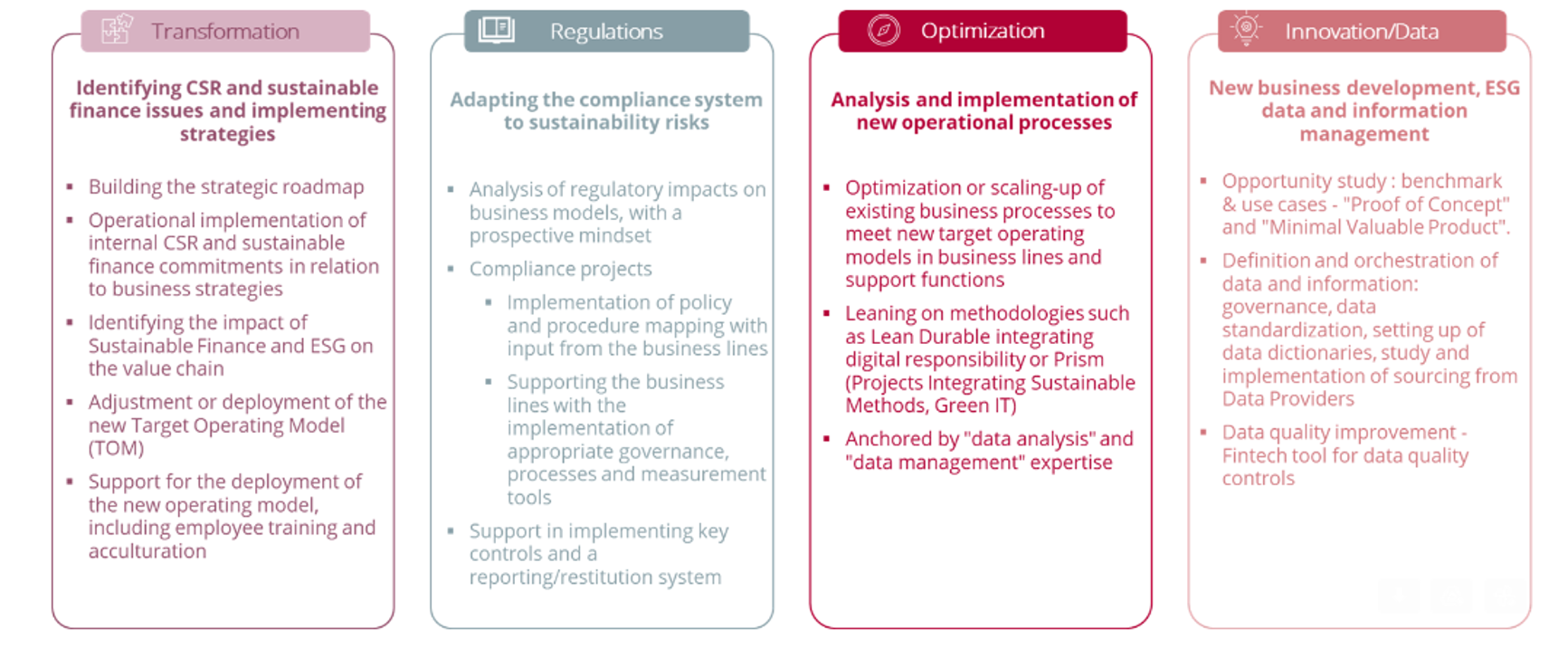Digital services have changed the way we live, offering many benefits and opportunities. But we can easily feel the consequences of services like Uber, Grab, FoodPanda, Lazada or Taobao through their direct impact on road traffic – specifically, when it comes to last-mile deliveries in the city center. These services have a direct impact on air pollution and therefore on our health.
Some digital services communicate about their “neutral carbon footprint” related to their electrical vehicle’s fleets. For example, Uber Green in Europe operates with dedicated electrical vehicles. In Singapore, Grab has defined a mid-term target to achieve a rate of 100% of “low emission” vehicles for their ride-hailing services. But one need to take into account the impact of the end-to-end value chain, in particular during the manufacturing phase. Indeed, these ‘green’ services generate an adverse effect due to an increasing demand which translates into the intensification manufacturing and its impact. Today, electronic components and car batteries are hardly recycled at a rate of 17% due to the weak economic viability of recycling. Carbon emissions due to electric vehicle usage depend on the local energy generation mix, 80% of which relies on fossil fuels globally.
What about the impact of cloud-based services like Ali Pay or Google Maps?
Measuring such impact is not an easy & straightforward exercise.
It is misleading to think that cloud-based services have a dissipated or lighter impact despite the ‘cloud’ term suggesting lightness. Operating cloud-based services requires datacenters, devices, and network infrastructures. For each of these equipment, their individual life cycle analysis shows that from 78% to 80% of the impacts emerge during their manufacturing phase due to the extraction and use of scarce materials such as rare-earth metals.
Digital services have a bigger impact than aviation
Cloud-based services environmental impacts are rather unapparent compared to civil aviation whereas air pollution impacts caused by aircrafts are more widely perceived.
Surprisingly, aeronautics and digital services (IT services emissions are significantly higher than WW civil aviation emissions, IT services = 3,8% civil aviation = 3% in TeqCO2). CO2 emissions of datacenters are greater than the ones issued by the aviation sector. This carbon footprint is mainly due to tremendous amount of energy required to run IT infrastructure.
Manufacturing impact: Digital equipment needs to be replaced periodically to support digital activities with generally more powerful technologies to increase effectiveness. To build any equipment, extracting high volumes of rare materials such as gold, silicon, etc. is necessary. For example, to extract 5 grams of gold for electronic components, extracting 2 tons of earth is required.
Usage impact: High volumes of primary energy and water consumption are needed to power devices, operate calculations and keep infrastructures cooled in datacenters.
End of life impact: Recycling capabilities are hindered by technological obsolescence, because of the short lifespan of equipment used by digital services. They are used intensively and need to be constantly updated to maintain performances and security standards. In another hand, the limited ability to extract and isolate each material from components in a cost-effective way result in exclusively 17% recycling rates.
Energy-mix as a game changer
Energy-mix defines the repartition of energy sources for a specific geographical area. The energy repartition used to power digital services allows us to determine the digital carbon footprint. The part of fossil or renewable energy defines the carbon intensity in tons of carbon equivalent by kilowatts (TeqCO2/Kw). But what are the influences of energy-mix on digital services?
Energy produced locally is used by digital equipment and datacenters to run. According to their high energy consumption each kilowatt is related to the local carbon intensity. For example: in Europe, France has a favorable energy-mix with 60g per kW/h composed by 40% of nuclear energy. This is a significant advantage in comparison to German power production which generates 709g per kW/h, at least 11 times more carbon intensive energy due to their oil and gas-based fossil energy-mix.
For digital services if a company decides to contract with a cloud provider or build a datacenter, it would be more interesting to choose France instead of Germany if the carbon intensity criteria is considered.
However, there are some limits on the energy mix factor. A lower impact due to a favorable location is not systematic. In fact, we must consider the location of the main digital service infrastructure. For example, a search engine such as Google used in France will transfer requests to Google datacenter located in North America with a higher carbon intensity (199g / KWh in California), due to a local energy mix essentially based on fossil energy.
According to their fossil energy sources, digital services lead to increased greenhouse gases emissions, contributing to global warming. Although, some datacenters launch a transition towards renewable energy sources, such as solar and wind power but the principle of the « green » datacenter remains marginal.
The Cloud is not a silver bullet
Cloud infrastructures can be considered as a step toward a more sustainable IT, thanks to the centralization of a high volume of data and calculation in a mutualized infrastructure. Moreover, upward and downward scalability constitutes a part of eco-design principles. When a cloud datacenter is powered by renewable energy, greenhouse gases related to the cloud provider could be optimally reduced.
As a matter of fact, upward scalability provides an illusion of unlimited calculation capabilities, which could inhibit the interest in code optimization, usage sobriety and code quality principles. A bouncing effect is created due to the increasing usage of digital features and services without any technical restriction to ensure constant availability and response time. To reach high performances, cloud datacenters require high energy and water consumption as well as high frequency equipment renewal which generate a lot of electronic waste.
If datacenters were not to be a viable solution, what can we do to reduce the environmental impact of digital services?
Eco-design applied to digital services as a solution
To reduce digital carbon footprint, we need to design sustainable IT solutions based on green IT best practices at each step of the lifecycle. Here are 5 examples of eco-design principles to apply for developers:
Energy consumption optimization: Software developers must design energy efficient applications by optimizing resources usages (CPU, disks, memory, network, etc.)
Data consumption reduction: Design a data-efficient solution by reducing network solicitation of running application. Thus, reducing the load on network and storage infrastructures.
Apply eco-design priniciples: Use eco-design, best practicies to reduce software impacts related to the Front-end, Back-end, content, unused code and hosting.
Putting an end to software obsolescence: Developers must design applications with retro-compatibility to extend durability and reduce hardware obsolescence. Software must be designed to be durable for devices to reduce the volume of electronic waste. 80% of mobile terminals are replaced due to software obsolescence (bugs, slowness, incompatibilities, etc.)
User awareness: End users must be aware about the environmental impacts of their digital services usage, to help the adopt a more sustainable approach in their consumption habits.
To conclude, digital services generate many benefits by improving our way of life, but also as growth lever for companies. According to the significant environmental impact related to these services, we must support a growing digitalization with acceptable environmental impacts. To face this challenge, awareness, measurement, and eco-design are solutions to pursue a sustainable IT target model for IT services.
How KYC Consulting can help to face this challenge: our sustainable IT offer
To raise awareness, implement measurement capabilities, and foster eco-design as a solution to pursue a sustainable IT target model for IT services.

Harris FOSU APPIAH, Digital and Green IT Expert
For English version Vannida Tan, Manager at KYC Consulting Asia
